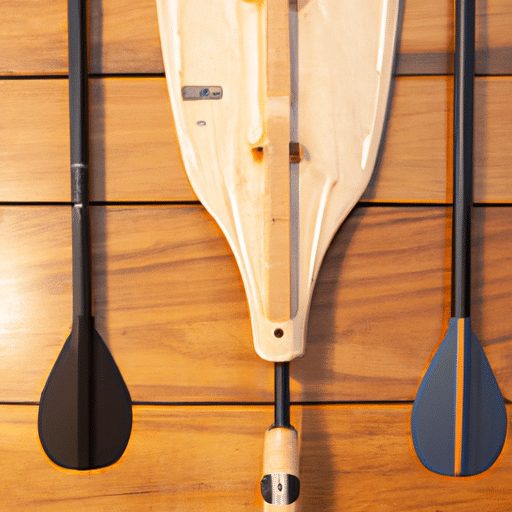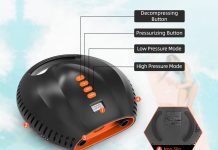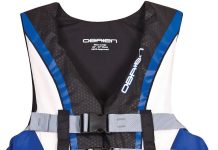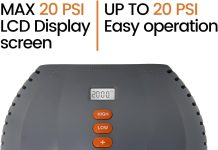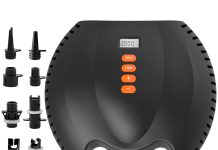Today, we are here to demystify the process of disassembling and reassembling a 3-piece SUP paddle. If you’re a paddleboarding enthusiast like us, you know how important it is to have the right equipment and maintain it properly. So, whether you’re an experienced paddler looking to clean your paddle or a curious beginner wondering how to transport your paddle more conveniently, we’ve got you covered. Stay tuned as we guide you through the step-by-step process with our friendly and easy-to-follow instructions. Get ready to paddle like a pro! Taking apart and putting together a 3-piece SUP paddle is a simple and straightforward process that allows for easy storage and transportation. Whether you’re a beginner or an experienced paddleboarder, it’s essential to know how to properly disassemble and assemble your paddle. In this comprehensive article, we will guide you through the step-by-step process, provide tips and safety precautions, troubleshoot common issues, and answer frequently asked questions about 3-piece SUP paddles.
Choosing the Right SUP Paddle
Before diving into the disassembly and assembly process, it’s essential to choose the right SUP paddle that suits your needs and preferences. There are a few key factors to consider when selecting a paddle, including the paddle length, blade shape, material, and grip.
Consider the paddle length
The length of your SUP paddle is crucial for both comfort and efficiency while paddling. A paddle that is too short or too long can cause discomfort and affect your performance. To determine the ideal paddle length for you, consider your height, the type of paddling you’ll be doing (i.e., recreational, touring, racing), and the width of your paddleboard. Many paddle manufacturers provide size charts or length recommendations based on these factors, making it easier for you to choose the right paddle length.
Determine the blade shape
Blade shape plays a significant role in how the paddle moves through the water. Different blade shapes are designed for various paddling styles and conditions. For example, a larger blade surface area is suitable for powerful strokes, while a smaller blade is ideal for a gentler and more efficient stroke. Consider your paddling style and the type of water you’ll be navigating to select the right blade shape for your needs.
Check the paddle material
Paddle materials can vary, and each material has its own unique characteristics in terms of weight, durability, and performance. Common paddle material options include fiberglass, carbon fiber, aluminum, and plastic. Fiberglass and carbon fiber paddles are lightweight and offer excellent performance but may be more expensive. Aluminum paddles provide durability but can be heavier. Plastic paddles are more affordable and suitable for recreational paddling. Consider your budget, paddling frequency, and desired performance when choosing the paddle material.
Ensure proper grip
Having a comfortable and secure grip on your paddle is crucial for precise control and reduced fatigue. Most paddles come with a variety of grip options, including T-grips, palm grips, and ergonomic designs. It’s important to test out different grip styles and choose one that feels comfortable and secure in your hands. Some paddles also offer adjustable grips, allowing you to customize the fit to your liking.
Preparing to Take Apart the SUP Paddle
Before disassembling your 3-piece SUP paddle, it’s essential to ensure you have a suitable workspace and take certain precautions to protect the paddle components.
Find a flat and stable surface
When disassembling and assembling your SUP paddle, it’s important to have a flat and stable surface to work on. A sturdy table or flat ground can provide the stability you need to safely handle the paddle components. Avoid working on uneven or slippery surfaces to prevent accidental damage or injury.
Protect the paddle blade
To avoid scratching or damaging the paddle blade, it’s a good idea to place a soft towel or foam pad underneath the blade during the disassembly process. This protective layer will ensure that the blade remains in optimal condition and prevent any accidental slips or mishaps.
Loosen the adjustment clamp
The adjustment clamp is the mechanism that holds the paddle shaft and blade together. Before attempting to unscrew the paddle shaft, it’s necessary to loosen the adjustment clamp. Depending on the design of your paddle, the adjustment clamp may be located near the blade or on the shaft itself. Loosen the clamp by turning it counterclockwise, allowing for easier separation of the paddle components.
Unscrew the paddle shaft
Once the adjustment clamp is loosened, it’s time to unscrew the paddle shaft. Hold the shaft firmly with one hand and rotate the blade in the opposite direction to loosen the connection. You may need to apply some force to break the initial resistance, but avoid using excessive force to prevent any damage to the paddle or injury to yourself.
Taking Apart the SUP Paddle
Now that you have prepared the workspace and loosened the adjustment clamp, it’s time to take apart the SUP paddle. Follow these steps to ensure a smooth and safe disassembly process.
Separate the paddle blade from the shaft
With the adjustment clamp loosened and the paddle shaft unscrewed, you can now separate the paddle blade from the shaft. Hold the blade and gently pull it away from the shaft, ensuring a smooth and controlled motion. Be cautious not to let the blade drop or hit any hard surfaces, as this can cause damage to both the blade and the surrounding area.
Inspect and clean each component
After separating the paddle blade from the shaft, take a moment to inspect and clean each component thoroughly. Check for any signs of wear, damage, or loose parts. If you notice any issues, such as cracks in the blade or a loose adjustment clamp, it’s important to address them before using the paddle again. Use a soft cloth or sponge to wipe down the blade and shaft, removing any dirt or debris that may have accumulated.
Store the pieces securely
To ensure the longevity and proper storage of your 3-piece SUP paddle, it’s essential to store the pieces securely. Consider investing in a paddle bag or case specifically designed for SUP paddles. These storage solutions provide protection against damage, dust, and moisture. If a dedicated storage bag is not available, you can carefully wrap each component in a towel or cloth and store them in a dry and secure location.
Preparing to Put Together the SUP Paddle
When it’s time to put your 3-piece SUP paddle back together, there are a few important steps to follow to ensure a successful assembly.
Ensure the surface is clean and dry
Before assembling the paddle, make sure the surface you are working on is clean and dry. This will prevent any dirt or moisture from interfering with the assembly process and ensure a secure connection between the paddle components.
Check for any damage or wear
Just as you inspected the paddle components during the disassembly process, it’s crucial to do the same before reassembling the paddle. Look for any signs of wear, damage, or loose parts, paying close attention to the adjustment clamp and blade connection points. If you notice any issues, it’s important to address them before proceeding with the assembly.
Apply lubrication if necessary
If you find that the paddle components are not moving smoothly or there is resistance when twisting the shaft into the blade, applying a small amount of lubrication can help. Use a lubricant specifically designed for paddle components and apply a thin layer to both the shaft and the blade connection points. This will ensure a smooth and effortless assembly process.
Align the paddle pieces
In preparation for the assembly, align the paddle pieces properly. Insert the shaft into the blade connection point, ensuring that they fit together smoothly and securely. Take note of any alignment indicators or markings on the paddle components to guide you in aligning them correctly. Proper alignment will ensure a stable and efficient paddle when assembled.
Putting Together the SUP Paddle
Now that you have prepared the surface, inspected the paddle, and aligned the components, it’s time to put the SUP paddle back together. Follow these steps to ensure a secure and stable assembly.
Insert the shaft into the blade
Hold the blade in one hand and align the opening of the shaft with the connection point on the blade. Insert the shaft into the blade connection point, ensuring a snug fit. Apply gentle pressure and twist the shaft clockwise to secure the connection. Keep twisting until the paddle is fully assembled but avoid using excessive force.
Tighten the adjustment clamp
Once the paddle is fully assembled, it’s time to tighten the adjustment clamp. This clamp is responsible for securing the connection between the shaft and the blade. Hold the shaft firmly with one hand and turn the adjustment clamp clockwise to tighten it. Make sure it is secure enough to prevent any loosening during paddling but avoid overtightening, as this can cause damage to the paddle components.
Check for proper alignment and tension
After tightening the adjustment clamp, check for proper alignment and tension. Ensure that the blade and shaft are aligned straight, without any noticeable twists or misalignments. Additionally, check that the adjustment clamp is securely holding the paddle components together without any looseness or wobbling. Proper alignment and tension are essential for optimal paddle performance and stability on the water.
Test the paddle for stability
Before heading out on the water, it’s a good idea to test the paddle for stability. Hold the paddle with both hands and simulate paddling motions, paying attention to any unusual movements or sounds. Shake the paddle lightly to check for any signs of looseness in the connection points. If everything feels solid and stable, you’re ready to enjoy your paddleboarding session!
Maintaining and Storing the SUP Paddle
To ensure the longevity and performance of your SUP paddle, proper maintenance and storage are crucial. Follow these guidelines to keep your paddle in top condition.
Clean the paddle after each use
After each use, clean the paddle thoroughly to remove any saltwater, sand, or debris that may have accumulated. Rinse the paddle with fresh water, paying extra attention to the blade and connection points. Use a soft cloth or sponge to wipe down the paddle and remove any remaining dirt. Allow the paddle to dry completely before storing it.
Inspect for any signs of wear or damage
Regularly inspect your paddle for any signs of wear, damage, or loose parts. Check the blade for cracks, chips, or delamination. Ensure that the adjustment clamp is functioning properly and securely holding the paddle components together. Address any issues immediately to prevent further damage or accidents during use.
Store the paddle in a secure location
When not in use, store your paddle in a secure and dry location. Avoid leaving it exposed to direct sunlight, extreme temperatures, or high humidity. Consider investing in a dedicated paddle storage solution, such as a paddle bag or rack, to protect it from damage and dust. If storing the paddle outdoors, ensure it is covered with a UV-resistant material to minimize sun exposure.
Avoid excessive exposure to sunlight
Prolonged exposure to direct sunlight can cause damage to the paddle components, especially if they are made of materials like fiberglass or carbon fiber. When not in use, it’s best to store the paddle in a shaded area or cover it with a protective sleeve or cloth. This will help extend its lifespan and prevent discoloration or weakening of the materials.
Troubleshooting Common Issues
While taking apart and putting together a 3-piece SUP paddle is generally a straightforward process, there are a few common issues that may arise. Here are some troubleshooting tips for addressing these problems:
Paddle pieces won’t separate
If you’re having difficulty separating the paddle blade from the shaft, try using a gentle twisting motion while pulling the pieces apart. Apply a small amount of lubricant to the connection points if necessary. Avoid using excessive force, as this can damage the paddle and make it more challenging to separate in the future.
Paddle won’t tighten properly
If the adjustment clamp is not tightening properly, check for any debris or dirt that may be obstructing the mechanism. Clean the adjustment clamp and connection points thoroughly before attempting to tighten it again. If the issue persists, consider seeking professional assistance or contacting the paddle manufacturer for guidance.
Unusual noises or looseness while paddling
If you experience unusual noises or looseness in the paddle while paddling, stop using it immediately and inspect the paddle for any loose or damaged parts. Check the adjustment clamp, blade connection points, and shaft for any signs of wear or misalignment. Tighten any loose parts and ensure everything is properly secured before using the paddle again.
Shaft or blade becomes loose during use
If the paddle shaft or blade becomes loose while paddling, stop using it and tighten the adjustment clamp immediately. Check for any signs of wear or damage in the adjustment clamp or connection points. If the paddle continues to become loose during use, discontinue using it and seek professional assistance or contact the manufacturer for further guidance.
Tips and Safety Precautions
When working with a 3-piece SUP paddle, it’s important to keep these tips and safety precautions in mind:
Keep spare parts and tools handy
It’s always a good idea to have spare parts, such as extra adjustment clamps or screws, on hand in case of emergencies. Additionally, keeping a small tool kit with basic tools like a screwdriver or Allen wrench can be helpful for minor repairs or adjustments.
Practice putting the paddle together before your SUP session
Before heading out on the water, take some time to practice putting the paddle together and taking it apart. Familiarize yourself with the assembly process and ensure you can do it confidently and efficiently. This will save you time and frustration when you’re ready to go paddleboarding.
Never force the paddle pieces apart
If the paddle pieces are not separating easily, never force them apart with excessive strength. This can lead to damage or injury. Instead, follow the troubleshooting tips mentioned earlier, apply lubrication if necessary, and try a gentle twisting motion while pulling the pieces. If you’re still having trouble, seek professional assistance.
Use caution when tightening the adjustment clamp
When tightening the adjustment clamp, use caution to avoid overtightening. Tighten the clamp securely, but not to the point where it becomes extremely difficult to loosen or causes damage to the paddle components. Finding the right balance will ensure a secure and stable paddle connection.
FAQs about 3-Piece SUP Paddles
To address common questions about 3-piece SUP paddles, here are some frequently asked questions along with their answers:
Are 3-piece SUP paddles as durable as one-piece paddles?
While 3-piece SUP paddles are designed to be durable and robust, they may not be as rigid as one-piece paddles. The connection points in a 3-piece paddle can create slight flex or play, especially during powerful strokes. However, modern 3-piece paddles are engineered to minimize this flex and provide excellent durability and performance.
Can I adjust the length of a 3-piece paddle?
Yes, one of the advantages of a 3-piece SUP paddle is the ability to adjust the length. Most 3-piece paddles come with an adjustable shaft that allows you to customize the paddle length to suit your height and paddling style. Follow the manufacturer’s instructions for adjusting the paddle length, and ensure the adjustment clamp is secure before use.
Are all 3-piece paddles compatible with different blades?
Not all 3-piece paddles are compatible with different blades. Some paddle manufacturers offer interchangeable blades that can be used with the same shaft, while others have proprietary designs that only work with specific blades. Before purchasing a new blade for your 3-piece paddle, ensure it is compatible with the shaft you have.
Can I travel with a 3-piece SUP paddle?
Yes, one of the main benefits of a 3-piece SUP paddle is its portability and travel-friendliness. The ability to disassemble the paddle into three smaller pieces makes it easy to pack and transport. Many paddleboarders choose 3-piece paddles specifically for their convenience during travel and outdoor adventures.
Conclusion
Taking apart and putting together a 3-piece SUP paddle is a simple process that requires proper technique and attention to detail. By following the steps outlined in this article, you can easily disassemble and assemble your paddle for storage or transportation. Remember to maintain and store your paddle properly to ensure its longevity and performance. With the right knowledge and care, your 3-piece SUP paddle will provide countless hours of enjoyable paddling on the water.

